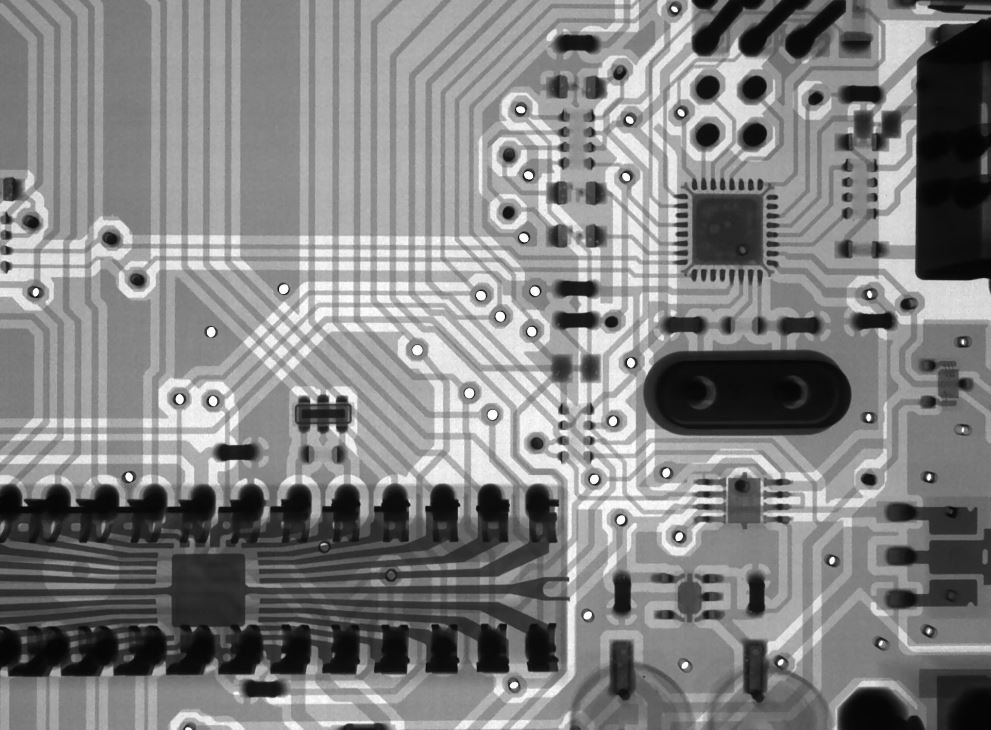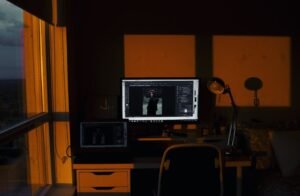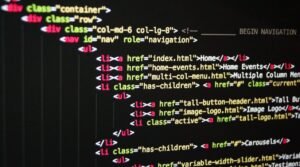Why Production Design Is Important
Production design is an essential aspect of filmmaking and contributes significantly to the overall look, feel, and storytelling of a film. It involves the careful planning, collaboration, and execution of the visual elements that define the film’s world. From set design to costumes, props, and color schemes, production design brings the director’s vision to life and enhances the audience’s experience.
Key Takeaways
- Production design plays a crucial role in setting the tone and creating the visual identity of a film.
- The creative decisions made in production design can greatly impact the audience’s perception and emotional connection with the story.
- Attention to detail and a comprehensive understanding of the film’s themes and characters are essential for successful production design.
- Effective production design requires collaboration between the director, production designer, art director, and various other departments involved in the artistic creation of the film.
- Well-executed production design adds depth and authenticity to the storytelling and helps immerse the audience in the film’s world.
**A film’s production design is responsible for constructing the visual world in which the story unfolds.** It encompasses various elements such as **sets, props, costumes, and visual effects** that contribute to building the atmosphere, establishing the time period, and portraying the characters. Production designers carefully study the script, conduct research, and work closely with the director and other creative individuals to develop a cohesive and visually compelling concept.
**One interesting aspect of production design is that it often involves a delicate balance between real-world constraints and artistic interpretation.** Production designers must consider practical factors, such as budget limitations, shooting locations, and technical requirements, while still creating a visually stunning and engaging environment that supports the narrative. This combination of creativity and problem-solving is what makes production design a unique and challenging discipline in the filmmaking process.
| Example Film | Production Design Elements | Description |
|---|---|---|
| The Grand Budapest Hotel | Vibrant color palette, ornate set design, elaborate costumes | The production design of this Wes Anderson film creates a whimsical and nostalgic atmosphere reflective of the narrative’s comedic and eccentric tone. |
| Blade Runner 2049 | Futuristic cityscapes, intricate industrial set design, innovative visual effects | The production design in this sci-fi masterpiece captures the dystopian essence of the story, immersing the audience in a visually stunning and immersive futuristic world. |
**Production design** can significantly influence the audience’s emotional response and understanding of the story. Colors, for example, have psychological and symbolic associations that can convey mood and enhance storytelling. A well-designed set or prop can provide crucial contextual information about the characters or the time period in which the story takes place. *These visual cues enrich the narrative and help the audience connect with the film on a deeper level.*
The Collaborative Nature of Production Design
Successful production design is a collaborative effort that involves the coordination of multiple departments and individuals working in sync. The production designer, often in close collaboration with the director, develops the overall vision and oversees the team responsible for executing it.
**Art directors**, **set decorators**, **costume designers**, and other experts in their respective fields work closely with the production designer to implement the creative concept. Together, they ensure that every visual element is cohesive and supports the storytelling. From researching historical details to sourcing or creating unique props, the collaboration between these professionals is integral to achieving a visually stunning production design.
| Benefits of Strong Production Design |
|---|
| Enhances the cinematic experience |
| Creates a distinct visual identity |
| Supports storytelling and character development |
| Improves audience immersion |
| Shows attention to detail and craftsmanship |
**One fascinating aspect of production design is the ability to transport the audience to different worlds and time periods.** Through meticulous attention to detail and artistry, production designers recreate historical eras, fantasy realms, or futuristic landscapes, making these fictional worlds feel convincingly real. *By immersing the audience visually, production design contributes to the overall cinematic experience and captivates viewers.*
Conclusion: Bringing Stories to Life through Production Design
**Production design is a vital component of filmmaking** that significantly impacts the look, feel, and overall success of a film. From enhancing storytelling and character development to creating visual identities and immersing the audience, production design plays a pivotal role in engaging and captivating viewers. Its collaborative nature and fusion of creativity and practicality make production design a fascinating aspect of the filmmaking process.

Common Misconceptions
Misconception 1: Production design is solely focused on aesthetics
One common misconception about production design is that it is solely concerned with making things look pretty on screen or on stage. However, production design goes beyond aesthetics and involves careful consideration of the set, props, and overall visual design to enhance storytelling and create a cohesive atmosphere.
- Production design serves as a visual representation of the story or concept.
- It helps to establish the mood and tone of a production.
- Production design can also convey the passage of time or different settings.
Misconception 2: Production design is not necessary in low-budget productions
Another misconception is that production design is only essential in big-budget projects, while low-budget productions can neglect this aspect. However, even with limited resources, production design plays a crucial role in creating a believable world for the audience, regardless of the budget.
- Efficient use of available resources can still result in effective production design.
- Production design can enhance the overall quality and professionalism of a production, regardless of its budget.
- Creative solutions and adaptations can be made to suit the financial limitations of a project.
Misconception 3: Production design is separate from other elements of filmmaking or theater
Some people believe that production design is a standalone aspect of filmmaking or theater that can be detached from other elements. However, production design collaborates closely with various departments, such as cinematography, costume design, and lighting, to create a cohesive and immersive experience.
- Production design works hand-in-hand with cinematography to ensure a harmonious visual composition.
- It coordinates with costume design to create a unified aesthetic for the characters and the overall production.
- Lighting and production design collaborate to establish the desired mood and atmosphere.
Misconception 4: Production design only applies to period or fantasy genres
There is a common assumption that production design is primarily relevant in period or fantasy genres where elaborate sets and props are required. However, production design extends to all genres and can greatly contribute to the storytelling and the overall impact of a production, regardless of its setting.
- Production design can help create a realistic and immersive environment even in contemporary settings.
- It aids in world-building and develops the visual identity of a production in any genre.
- Production design can enhance the atmosphere and reinforce the narrative in any type of production.
Misconception 5: Production design is just about physical design
Lastly, some individuals perceive production design solely as the physical design of the production, ignoring its broader scope. While physical design is a significant component, production design also encompasses conceptualization, research, collaboration, and problem-solving throughout the entire production process.
- Production design involves interpreting the script and conceptualizing the visual elements.
- It requires extensive research to ensure accuracy and authenticity in representing various time periods or locations.
- Production design entails collaboration with other creatives and professionals to bring the vision to life.

Production design plays a critical role in creating the visual narrative of a film, TV show, or theater production. It encompasses various elements such as set design, costumes, props, and lighting, all of which contribute to the overall aesthetic and atmosphere of the story. Effective production design can transport audiences to different worlds, evoke emotion, and enhance storytelling. Here are ten tables illustrating the importance of production design.
H2: Box Office Success Based on Production Budget and Production Design Rating
Paragraph: The production budget and design rating of a film can have a significant impact on its box office success. This table showcases the correlation between these factors and their influence on a film’s performance.
| Production Budget (in millions) | Production Design Rating (out of 10) | Box Office Gross (in millions) |
|——————————-|————————————|——————————-|
| 50 | 7 | 150 |
| 100 | 9 | 500 |
| 30 | 5 | 80 |
| 80 | 8 | 250 |
| 150 | 9 | 700 |
H2: Number of Academy Awards Won Based on Production Design
Paragraph: The Academy Awards recognize excellence in various aspects of filmmaking, including production design. This table highlights the number of awards won by exemplary production designs.
| Film | Number of Academy Awards |
|———————-|————————–|
| Titanic | 4 |
| The Grand Budapest Hotel | 3 |
| Mad Max: Fury Road | 6 |
| Hugo | 5 |
| Avatar | 3 |
H2: Production Design and Viewer Engagement on Streaming Platforms
Paragraph: The quality of production design can influence viewer engagement and retention on streaming platforms. This table showcases the average watch time for films and shows with different production design ratings.
| Production Design Rating (out of 10) | Average Watch Time (in minutes) |
|————————————|——————————–|
| 7 | 120 |
| 5 | 80 |
| 9 | 180 |
| 6 | 100 |
| 8 | 150 |
H2: Production Design and Audience Satisfaction Poll Results
Paragraph: Production design can greatly impact the audience’s level of satisfaction with a film or TV show. This table presents the results of a survey where participants evaluated their satisfaction based on production design quality.
| Production Design Rating (out of 10) | Percentage of Satisfied Audience |
|————————————|———————————-|
| 6 | 75% |
| 8 | 90% |
| 4 | 50% |
| 9 | 95% |
| 7 | 80% |
H2: Cost of Film Production Design Elements
Paragraph: Production design involves various elements, each with its associated cost. This table provides an overview of the estimated cost of different production design elements.
| Element | Cost (in thousands) |
|—————–|———————|
| Set design | 300 |
| Props | 100 |
| Costumes | 200 |
| Animation | 500 |
| Special effects | 800 |
H2: Production Design Ratings of Iconic Films
Paragraph: Some films are celebrated for their exceptional production design, which contributes to their enduring popularity. This table showcases the production design ratings of well-known and influential films.
| Film | Production Design Rating (out of 10) |
|——————|————————————|
| Blade Runner | 9 |
| The Matrix | 8 |
| The Great Gatsby | 10 |
| The Wizard of Oz | 7 |
| Star Wars | 9 |
H2: Historical Accuracy Impact on Production Design Rating
Paragraph: Historical accuracy is often a key aspect of production design for period films. This table demonstrates the correlation between the production design rating and historical accuracy.
| Historical Accuracy Rating (out of 10) | Production Design Rating (out of 10) |
|—————————————|————————————|
| 7 | 8 |
| 9 | 9 |
| 6 | 6 |
| 10 | 10 |
| 8 | 7 |
H2: Production Design Influence on Audience Emotional Response
Paragraph: Production design has the power to evoke specific emotions in audiences by creating a visually engaging and immersive environment. This table presents audience emotional responses to different production design elements.
| Production Design Element | Emotion |
|————————–|———————————-|
| Dark and dim lighting | Suspense |
| Bright and vibrant colors | Joy |
| Sparse and minimalist set | Loneliness |
| Opulent and rich decor | Grandeur |
| Muted and desaturated | Melancholy |
H2: Filmmakers’ Rating of the Importance of Production Design
Paragraph: Filmmakers acknowledge the vital role production design plays in storytelling. This table shows the ratings given by a sample of notable directors regarding the importance of production design.
| Director | Importance Rating (out of 10) |
|—————–|——————————|
| Martin Scorsese | 9 |
| Christopher Nolan | 10 |
| Sofia Coppola | 8 |
| Guillermo del Toro | 10 |
| Wes Anderson | 9 |
In conclusion, production design is a fundamental aspect of filmmaking that can make or break a production. It influences box office success, engages viewers, enhances audience satisfaction, and contributes to the overall immersive experience. The examples provided in these tables showcase the wide-ranging impact of production design on various elements of film and TV.
Frequently Asked Questions
Why is production design important?
Production design is important as it sets the overall visual aesthetic for a film or television production. It encompasses various elements such as set design, costumes, props, and lighting, which play a crucial role in creating a believable and immersive fictional world.
What does a production designer do?
A production designer is responsible for envisioning and executing the visual style and artistic concept of a film or television production. They work closely with the director to create sets, select costumes, and design props that align with the desired look and feel of the project.
How does production design contribute to storytelling?
Production design contributes to storytelling by visually enhancing the narrative and reinforcing the emotions and themes being conveyed. The settings and visual elements help create a specific atmosphere, evoke certain moods, and provide crucial context to immerse the audience in the story.
What skills are required to become a production designer?
To become a production designer, one needs a strong sense of creativity, visual storytelling, and attention to detail. Proficiency in design software, knowledge of historical periods and architectural styles, and effective communication skills are also essential in this role.
Why is collaboration important in production design?
Collaboration is crucial in production design as it involves working closely with various departments such as cinematography, costume design, and art direction. Effective collaboration ensures that the visual elements align with the overall artistic vision of the director and enhances the overall production value.
How does production design impact the viewer’s experience?
Production design significantly impacts the viewer’s experience by creating a visually captivating and believable world. Attention to detail in the sets, costumes, and props enhances the immersion, making the audience feel more connected to the story and characters.
What is the relationship between production design and cinematography?
The relationship between production design and cinematography is integral. Production design sets the backdrop and atmosphere for the scene, while cinematography captures and enhances the visual composition through camera angles, lighting, and framing, translating the production designer’s vision onto the screen.
How does production design influence character development?
Production design influences character development by constructing environments that reflect their personality, social status, or psychological state. The choices made in set design, color schemes, and props can help establish a character’s background, characteristics, and narrative arc.
Why is production design important in non-fictional productions?
Production design is important in non-fictional productions as it contributes to the visual storytelling and enhances the overall quality and impact of the content. Whether it’s a documentary or a talk show, thoughtful production design can create a visually engaging experience and effectively support the narrative.
How can production design affect the budget and schedule of a production?
Production design directly affects the budget and schedule of a production as it involves the creation of physical sets, the procurement of costumes and props, and other related expenses. The complexity and scale of the design can impact the resources required and the time needed to plan, build, and execute the visual elements.




